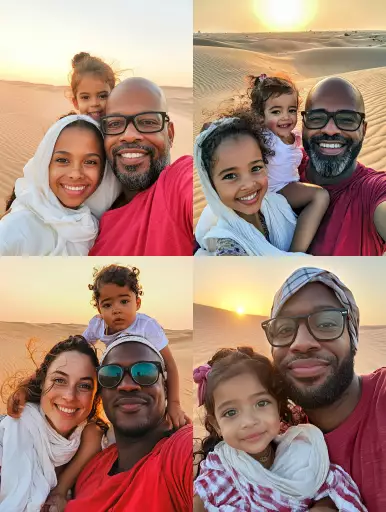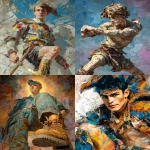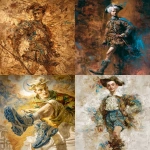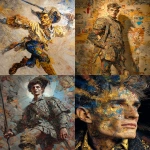Explore the Best AI Image Gallery

Where Creativity Meets Technology: AIs Transformative Impact on Graphic Design
The world of graphic design is undergoing a seismic shift, fueled by the rapid advancements in artificial intelligence (AI). No longer confined to the realms of science fiction, AI is now a tangible force, poised to reshape how designers conceive, create, and deliver visual content. This dynamic intersection of creativity and technology promises exciting possibilities, but also presents unique challenges that demand careful consideration.
The Rise of AI in Design Tools
AI-powered design tools are rapidly becoming mainstream, offering a suite of capabilities that augment and enhance the traditional designers toolkit. These tools can automate repetitive tasks like logo generation, image editing, and layout design, freeing up designers to focus on higher-level creative pursuits.
- Logo Design: AI algorithms can analyze brand guidelines and generate multiple logo options based on specific preferences, offering designers a starting point for further refinement.
- Image Editing: AI-powered tools can automate tasks like object removal, background replacement, and color correction, streamlining the image editing process.
- Layout Design: AI can suggest optimal layouts for websites, brochures, and other design projects, taking into account factors like readability and visual hierarchy.
Expanding Creative Boundaries
Beyond automating tasks, AI has the potential to unlock new creative frontiers. By analyzing vast datasets of images and designs, AI algorithms can identify patterns, trends, and aesthetic principles that may not be immediately apparent to human designers. This can lead to the emergence of novel design concepts and styles.
- Personalized Design: AI can tailor design elements to individual user preferences, creating unique and personalized experiences.
- Generative Art: AI algorithms can generate entirely new pieces of art, pushing the boundaries of creative expression.
- Interactive Design: AI can create dynamic and responsive designs that adapt to user interactions, enhancing engagement and immersion.
Ethical Considerations
While the potential benefits of AI in graphic design are undeniable, it is crucial to address the ethical considerations that accompany this transformative technology:
- Copyright and Ownership: Questions arise regarding the ownership of designs generated by AI algorithms. Who holds the copyright – the developer of the AI, the user who provides input, or the AI itself?
- Bias and Representation: AI algorithms are trained on vast datasets, which may contain inherent biases that reflect societal stereotypes and prejudices. This can result in the perpetuation of harmful representations in design.
- Job Displacement:** There are concerns that AI-powered design tools may automate tasks currently performed by human designers, leading to job losses in the creative industry.
Future Trends
The future of AI in graphic design is brimming with possibilities. We can anticipate:
- Increased Personalization: AI will enable designers to create highly personalized experiences tailored to individual users.
- Enhanced Collaboration:** AI tools will facilitate seamless collaboration between designers, clients, and developers, streamlining the design process.
- New Design Paradigms: AI will continue to push the boundaries of creative expression, leading to the emergence of innovative design concepts and styles.
Conclusion
AI is poised to revolutionize the graphic design landscape, offering unprecedented opportunities for creativity, efficiency, and innovation. By embracing this transformative technology while addressing ethical considerations, designers can unlock its full potential and shape the future of visual communication.
](https://images.ai-img.art/thumbnails/150/1614d64dd7156c95db952258978be809eb3db8cea4453fec69c49cbdfe63fa94.webp)

](https://images.ai-img.art/thumbnails/150/3a60737a5b67fa252207ad1ae6db245a26284f53fb5846996bb34515b39ff269.webp)






](https://images.ai-img.art/thumbnails/150/8c3bd422d50d35735d8fb33bd314a79e30e5b150129d5d09bdad822a2007593f.webp)


